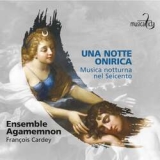Dieses Programm mit venezianischer Instrumental- und Vokalmusik aus dem 17. Jahrhundert präsentiert wenig bekannte Komponisten und zeugt von der Vielfalt des kompositorischen Schaffens in der Lagunenstadt, ein Schaffen, das allzu gerne von dem von Vivaldi und bekannteren Zeitgenossen in den Schatten gestellt wird.
Die Musik dieser träumerischen, sinnlichen Nacht erfreut durch tänzerischen Gestus und reiche, rasch wechselnde Affekte. Unterschiedliche Komponistentemperamente und der Wechsel zwischen geistlicher und weltlicher Musik erlauben eine sehr anregende Entdeckungsreise durch diese barocke Klangwelt. Dies liegt allerdings auch an der hervorragenden Interpretation durch die Musiker des sehr feinsinnig agierenden Ensembles Agamemnon.
Das Gleichgewicht zwischen blühendem Klang und affektbezogener Artikulation bleibt jederzeit gewahrt. Das Ensemble bietet dieses bedächtig-prachtvolle Repertoire mit besonderem Gespür für eine weiche klangfarbliche Gestaltung. In den Vokalstücken fügen diese sich die Instrumentalisten zudem aufs Beste zur Stimme von Alice Kamenezky.
This program of 17th-century Venetian instrumental and vocal music features lesser-known composers and testifies to the diversity of compositional output from the lagoon city, output that is all too often overshadowed by that of Vivaldi and his better-known contemporaries.
The music of this dreamy, sensual night delights with its dance-like gestures and rich, rapidly changing affects. The composer’s different temperaments and the alternation between sacred and secular music make for a very stimulating voyage of discovery through this Baroque world of sound. This is also due to the excellent interpretation by the musicians of the very subtle Ensemble Agamemnon.
The balance between flourishing sound and emotional articulation is always maintained. The ensemble offers this well-considered and magnificent repertoire with a special feeling for soft tone coloration. In the vocal pieces, too, the instrumentalists blend perfectly with Alice Kamenezky’s voice.
























